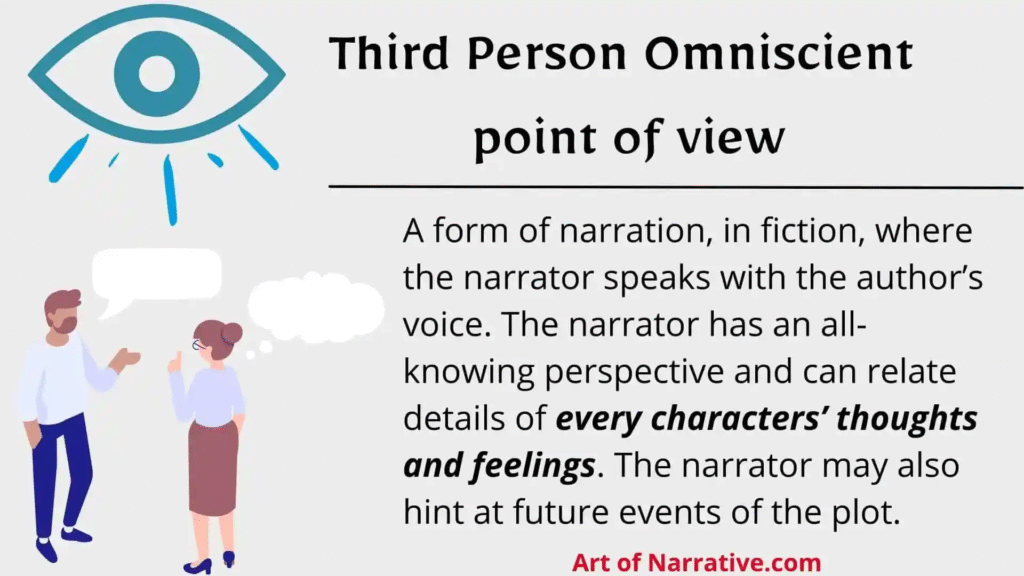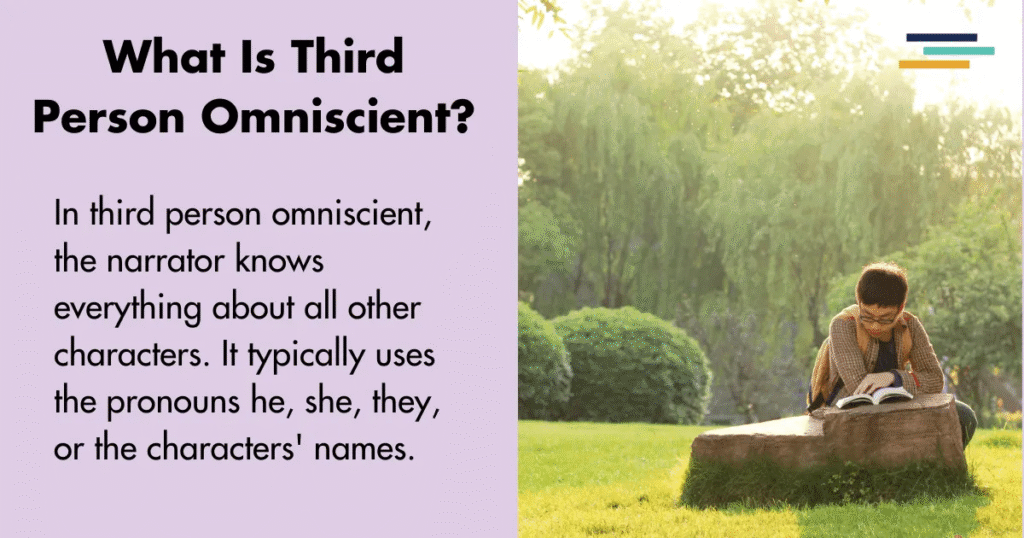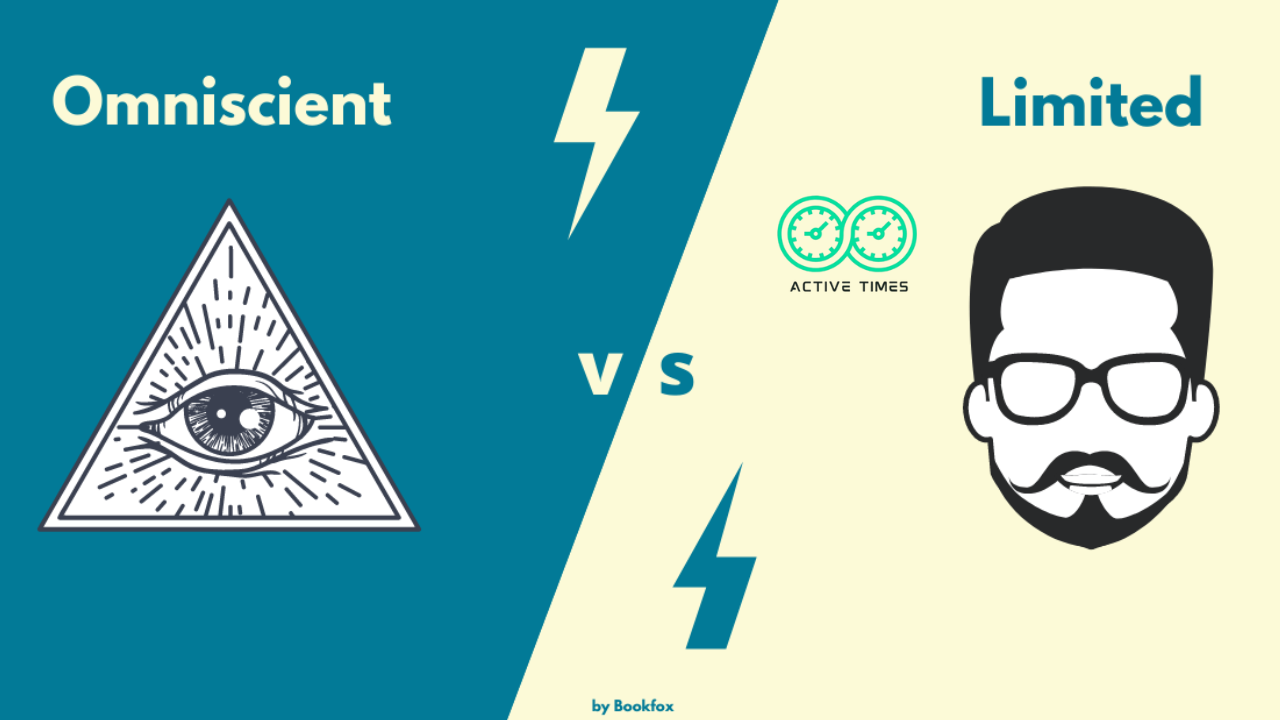The 3rd person omniscient point of view might sound like a big, fancy phrase, but it’s actually easy to understand. It simply means a story where the narrator knows everything about everyone—what they’re doing, feeling, thinking, and even what’s going to happen next. Let’s break it down so even kids can understand and enjoy learning about this powerful way to tell a story.
What Does 3rd Person Omniscient Mean?
The term “3rd person omniscient” is a style of storytelling where the narrator stands outside the story but knows everything about all the characters. The word “omniscient” means “all-knowing,” and in this point of view, the narrator knows things that the characters may not know themselves.
In this point of view, the writer uses “he,” “she,” “they,” and character names like “Alex,” “Maria,” or “Mr. Johnson” instead of “I” or “we.” What makes this viewpoint special is that the narrator doesn’t just describe what the characters do. The narrator can also share their thoughts, emotions, memories, hopes, and secrets—even if those characters are in different places at the same time.
For example, imagine you’re reading a story, and the narrator tells you what Max is feeling during a storm, then jumps to Lily’s thoughts in another part of the city. That’s 3rd person omniscient—it’s like being a superhero with the power to peek into everyone’s mind!
How Is It Different From Other Points of View?
There are a few different ways a writer can tell a story, and 3rd person omniscient is just one of them. Here’s how it stands out:
- In first person, the story is told using “I.” It’s like reading someone’s diary.
- In second person, the story uses “you,” which is rare and makes you feel like the story is happening to you.
- In third person limited, the narrator knows what only one character is thinking and feeling.
- But in third person omniscient, the narrator knows what everyone is thinking and feeling.
So, while third person limited sticks with one character’s mind, third person omniscient can jump around and show us the whole world of the story, making it feel bigger and more exciting.
Why Do Writers Use 3rd Person Omniscient?
Writers choose this point of view when they want to give readers a broad look at a story. It’s like watching a movie from the sky, where you can see all the action happening at once. This style works well when a story includes many characters, locations, and events happening at the same time.

It’s perfect for exploring large ideas, complex emotions, and deep stories. Authors love using it when they want to reveal secrets the characters don’t even know yet. Below are some reasons why writers pick this style:
It Gives a Big Picture
With 3rd person omniscient, the narrator can zoom out and show everything at once. This is useful when the story includes a lot of places or different characters doing different things. It helps the reader understand how everything connects.
For example, if a story is about a school play, the narrator can describe what the teacher is planning, what the students are thinking, and even what the principal is doing—all at once.
Shows Everyone’s Feelings
In this point of view, we don’t just see what one person feels—we get to know how everyone feels. That makes stories more emotional and helps readers understand why characters act the way they do.
This is especially great in stories where characters are facing challenges or making big decisions. If one character is nervous and another is confident, we get to feel both emotions—and that makes the story much richer.
Helps in Big Stories
Think about books with many characters, like fantasy stories or tales about war, space travel, or magical kingdoms. These stories often use third person omniscient because they need to cover a lot of ground.
Since the narrator can be in many places at once, this view lets the story move quickly without losing the reader. We can switch from one side of the world to another in just a few lines!
Examples of 3rd Person Omniscient in Books
Many famous books use 3rd person omniscient to bring their stories to life. In “Charlotte’s Web” by E.B. White, the narrator tells us what Wilbur the pig is thinking, what Charlotte the spider is planning, and even what the farmers are doing. This creates a complete picture of life on the farm.
Another great example is “Harry Potter” by J.K. Rowling. While the story often follows Harry, the narrator sometimes shares what other characters like Ron, Hermione, or even Voldemort are thinking or planning. That’s the power of an all-knowing narrator.
Books like “The Chronicles of Narnia” and “A Series of Unfortunate Events” also use this view. These stories would be hard to tell from just one character’s eyes, which is why authors choose a broader lens to give readers the full story.
Is 3rd Person Omniscient Hard to Write?
It can be a little tricky to write in 3rd person omniscient, especially for beginners. That’s because it gives you so much power that it’s easy to confuse readers if you jump around too quickly or tell too much.
Writers need to stay organized. They have to know every character really well and understand the full story, even before writing it. They also need to be careful not to share too much at once, or the reader might feel overwhelmed.
But with practice and planning, writers can master this style and use it to create amazing stories. It just takes time to learn how to guide the reader smoothly from one character to another.
Best Time to Use This Point of View
Not every story needs an omniscient narrator. Some stories work better when told from just one person’s point of view. But there are times when this perspective is the best choice.

Big Adventures Need Big Views
If your story has lots of events happening in different places—like a battle, a school-wide mystery, or a treasure hunt across many lands—then using 3rd person omniscient helps readers keep up with everything.
It’s like being a bird flying above the story, watching it all happen at once.
Great for Showing Secrets
This style is great for revealing secrets the characters don’t know. The narrator can give readers clues that the characters might miss, which builds suspense and makes the story more fun.
For example, a narrator might tell us that the villain is hiding behind the curtain, even though the hero doesn’t know it yet. That makes readers want to yell, “Look out!”
Common Mistakes to Avoid
Even though this point of view is powerful, it comes with some common mistakes that writers should avoid:
- Head-hopping too quickly: Changing from one character’s mind to another too often can confuse readers.
- Giving too much information: If the narrator tells everything at once, there’s no mystery left.
- Not having a strong voice: Because the narrator is outside the story, their voice still needs to be fun and easy to follow.
By avoiding these mistakes, writers can use 3rd person omniscient to make their stories exciting and clear.
3rd Person Omniscient vs Limited – What’s the Difference?
The biggest difference between 3rd person omniscient and 3rd person limited is how much the narrator knows. In 3rd person limited, the narrator knows what’s going on inside one character’s mind. In 3rd person omniscient, the narrator knows what’s going on inside everyone’s minds.
Imagine you’re playing a video game. If you’re in third person limited, you can only see through one character’s eyes. But in third person omniscient, you’re the game master—you see everything and everyone, all the time.
The Bottom Line
The 3rd person omniscient point of view is a fun and powerful way to tell a story. It lets the narrator be everywhere at once—inside every character’s head and heart. That means readers get a full picture of the story world, with all the emotions, secrets, and actions included.
Writers use it when they want to show a lot of things happening at once or when they want to share secrets with the readers. While it might take some practice to write, it helps make stories richer, deeper, and more exciting.
